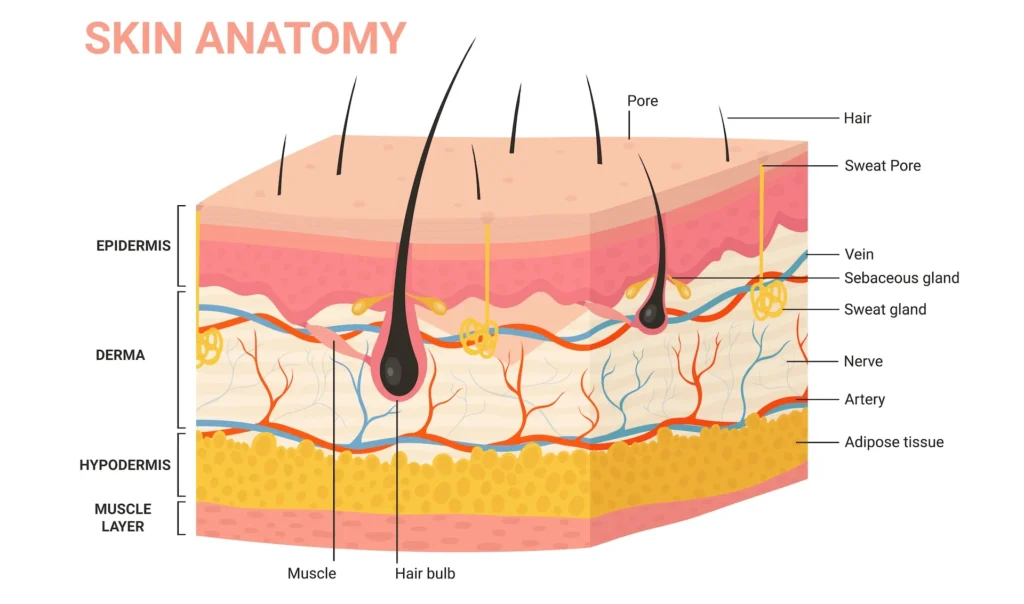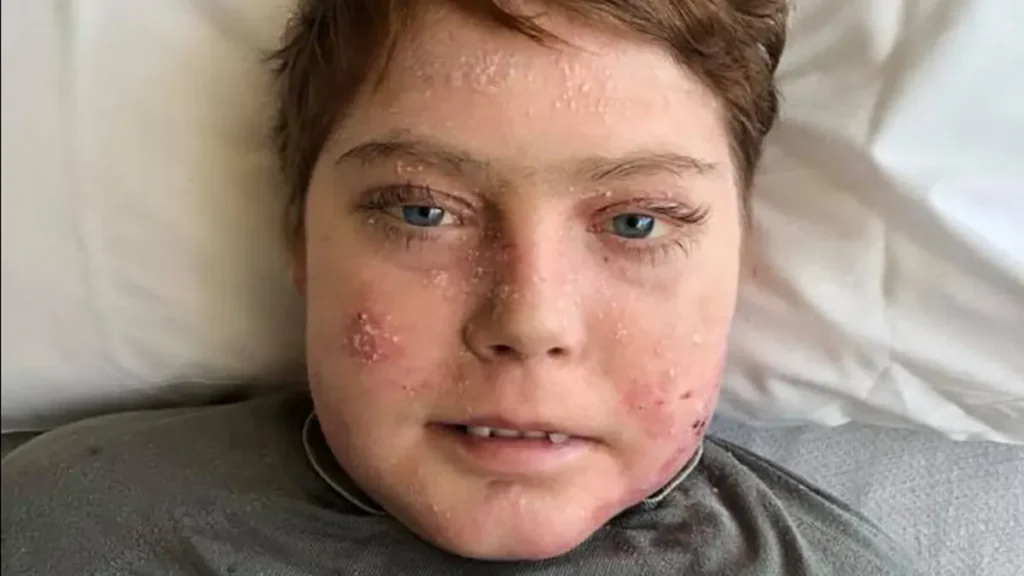Key Takeaways
- Butterfly skin disease is the primary keyword, referring to a rare genetic condition that causes extremely fragile skin prone to blistering.
- Symptoms include blisters, sores, and painful skin reactions even from mild friction.
- The disease is classified into four primary types: Kindler Syndrome, JEB, DEB, and EBS.
- While there is no cure, treatments focus on wound care, infection prevention, and nutritional support.
- Life expectancy varies based on the type and severity of the condition.
What Is Butterfly Skin Disease?
Imagine skin so delicate that even a light touch can cause it to blister or tear. That’s the everyday reality for people living with butterfly skin disease, scientifically known as Epidermolysis Bullosa (EB). This rare genetic disorder affects the skin and mucous membranes, making the body’s largest organ as fragile as a butterfly’s wing — hence the name.
According to the Medical Journal, Armed Forces India, this condition affects approximately 50 out of every 1 million live births globally. Symptoms typically begin in infancy, but milder forms may remain unnoticed until adolescence or adulthood.
Why Is the Skin So Fragile?
The skin is made up of layers held together by proteins like collagen, keratin, and laminin. In people with EB, genetic mutations prevent these proteins from forming correctly or at all. As a result, even the slightest friction can separate skin layers, forming painful blisters and wounds.
Dr. Khushboo Jha, a leading dermatologist, explains: “Minor trauma such as rubbing or bumping into objects can cause immediate blistering. In severe cases, even internal linings like the esophagus and urinary tract are affected.”

Types of Butterfly Skin Disease: Know the Differences
There are four major types of Epidermolysis Bullosa, each with distinct characteristics and severity:
- Epidermolysis Bullosa Simplex (EBS)
- The mildest and most common type (70% of cases).
- Affects the outer layer of skin.
- Blisters typically appear on the hands and feet.
- Junctional Epidermolysis Bullosa (JEB)
- Skin and mucous membranes are affected by a more severe type.
- Babies with JEB may have life-threatening complications.
- Dystrophic Epidermolysis Bullosa (DEB)
- Affects deeper skin layers.
- Leads to permanent scarring and deformities.
- Increases cancer risk later in life.
- Kindler Syndrome
- A rare, mixed type.
- Includes sun sensitivity, blistering, and skin thinning (atrophy).
Common Symptoms of Butterfly Skin Disease
The symptoms of EB vary by type but often include:
- Fragile skin that blisters with minimal contact
- Painful sores on the skin and mucous membranes (mouth, eyes, throat)
- Thickened skin on palms and soles (hyperkeratosis)
- Broken or missing nails
- Severe dental issues and tooth decay
- Difficulty swallowing (esophageal strictures)
- Chronic anemia and fatigue
- Delayed growth and development in children
How Is It Diagnosed?
Diagnosis is typically made through:
- Skin biopsy with immunofluorescence mapping
- Genetic testing to identify mutations
- Family history and clinical examination
Prenatal testing is also available for families with a known history of EB.
Life Expectancy: What the Data Says
Life expectancy for people with butterfly skin disease depends on the type and severity:
- EBS (Mild): Normal life expectancy with proper care
- JEB (Severe): Often fatal within the first year of life
- Severe DEB: Life expectancy may be limited to the 30s or 40s due to complications like squamous cell carcinoma
Dr. Jha notes: “Severe DEB patients require constant medical attention and are at a higher risk of developing aggressive skin cancers.”
Treatment Options: Managing a Life-Long Condition
There is currently no cure for butterfly skin disease. However, various treatment approaches can significantly improve quality of life.
- Advanced Wound Care
- Use of non-stick, silicone-based dressings
- Sterile saline or antiseptic cleaning to prevent infection
- Topical antibiotics like mupirocin for infected areas
- Pain-relieving creams before dressing changes
- Nutrition and Supplements
- High-calorie, soft diets to aid wound healing
- Iron and zinc supplements for skin regeneration
- Vitamins A, C, and E to boost immunity
- Feeding Support
- For patients with oral or esophageal involvement, feeding tubes (gastrostomy or nasogastric) may be necessary.
- Drug Therapies
- According to the UK’s NHS, a birch bark extract gel has shown promise in treating certain types of EB in patients over six months old.
- Physical and Occupational Therapy
- Helps reduce the risk of joint contractures and maintain mobility.

Living with Butterfly Skin Disease: Real-World Challenges
Living with EB is not just physically painful but emotionally and financially taxing. Many families must manage daily wound care, navigate frequent hospital visits, and deal with social stigma.
Patient advocacy groups like DEBRA International and EB Research Partnership offer support, resources, and funding for research.
The Future: Can Butterfly Skin Disease Be Cured?
Promising developments are underway:
- Gene therapy: Trials are exploring correcting the faulty genes causing EB.
- Stem cell therapy: Investigations are ongoing to regenerate healthy skin cells.
- Topical protein treatments: Scientists are working on creams that can deliver missing proteins to the skin.
Still, widespread application of these treatments is years away. Until then, symptom management remains the cornerstone of care.
Conclusion
Butterfly skin disease, or Epidermolysis Bullosa, is a rare yet devastating genetic condition that turns everyday life into a painful ordeal. While there’s no cure yet, modern wound care techniques, nutritional support, and promising research give patients and families hope. As science advances, the butterfly wings may no longer have to be so fragile.


